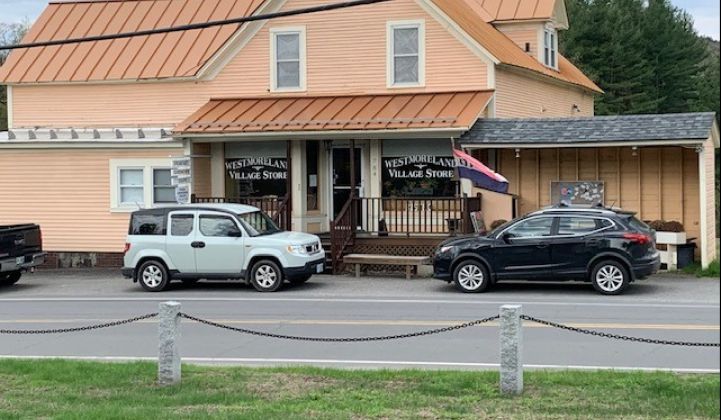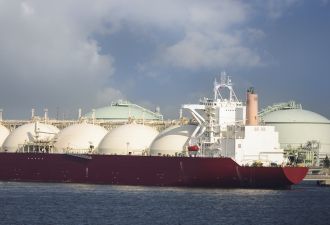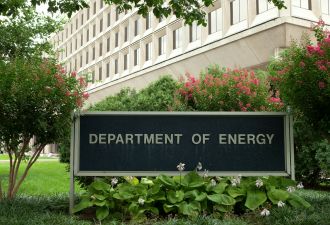New England utility Eversource wants to deploy energy storage to back up an outage-prone New Hampshire town, while saving customers money.
The roughly 1,700 residents* of Westmoreland rely on a single radial power line to deliver electricity through the forested, rural surroundings. Ice storms and heavy snowfall regularly knock that line down, making the area an outlier in the frequency and duration of outages.
"The traditional answer would be to build a redundant line to back up the one line if it goes out," said Charlotte Ancel, director of clean energy development at Eversource. "But we see this all the time in storms, where the redundant line goes out too."
Instead, Ancel's team proposed small- and large-scale energy storage to power up the entire community when the feeder goes down, and reduce bills at other times by lowering the town's peak consumption. It's a new spin on the concept of using clean energy technology to offset traditional grid expenses, an approach known as non-wires alternatives.
The Westmoreland Clean Innovation Project also comes as New England states use policy and regulatory tools to push their grids in a cleaner, more decentralized direction. If it gets regulatory approval and performs as expected, this could lead to similar projects in other towns with severe reliability concerns.
New approach
Non-wires projects have featured utility-owned batteries, like Punkin Center in Arizona, or customer-owned devices, like Demand Energy's Marcus Garvey project in Brooklyn (the storage developer was subsequently acquired by Enel). A few even tap a network of small devices in customers' homes, like Liberty Utilities' innovative residential battery pilot in New Hampshire.
The Westmoreland project would combine both. Eversource wants to own and operate the 1.7-megawatt/7.1-megawatt-hour battery as the bulwark of the local grid defenses. But it will reduce the capacity that the battery needs by complementing it with customer programs.
The utility will target energy efficiency upgrades in the area, as well as a "bring-your-own-device" plan where customers earn money for letting Eversource use their batteries, thermostats or electric car chargers for demand reduction during peak events.
"Every kilowatt of efficiency savings that we come up with enables us to size that battery smaller, which brings down cost," Ancel said.
Reducing peak load with the network of small energy devices will shave about $750,000 off the capital expense of the battery, she added.
This structure opens up several avenues for New England's budding storage industry to pursue: utility-scale system design and construction (the central battery will go through competitive procurement), consumer-facing storage sales and aggregation services for customer devices.
A better deal for resilience
Grid resilience, the ability to bounce back from disruptions caused by extreme weather or climate change or some other human activity, is something a lot of people say they want until they have to actually pay for it.
The Westmoreland project, notably, structures the grid investments so they provide resilience but also return net savings to ratepayers.
The number to beat was $6 million, the estimated cost of building the redundant distribution line. The project came in at around $7 million upfront, but will provide customers a net savings of $2 million over the course of its 25-year operating life, Ancel said.
An extra power line would sit around waiting for a tree to fall on its counterpart to make the investment worthwhile. When the battery isn't preparing for a storm-induced outage, it can save money for the utility territory.
The utility gets charged for consumption during the annual peak in ISO New England, as well as monthly regional transmission peaks. Those charges get distributed among all the customers in the territory. Insofar as the battery project cuts Westmoreland's annual and monthly peak consumption, it incrementally lowers the charges that the entire customer base has to pay. That explains the long-term savings despite the higher upfront price tag.
To secure those savings, the utility has to successfully predict the peaks and discharge the batteries accordingly. But it helps that the big battery will pack a longer duration — enough to back up the town for five hours at the beginning of its operating life.
"The longer duration of the battery makes it easier to ensure that we hit those peaks to deliver savings to our customers," Ancel said.
This is a novel way of making clean energy feasible in today's regulatory construct. Showing how one community's upgrade helps all customers is a definite plus, if not a necessity. This design also makes a rate-based, utility-owned asset sound palatable, if not downright exciting.
By choosing to stay away from owning any devices behind the meter, Eversource avoided the kinds of competitive landscape challenges that arose when New Hampshire's Liberty Utilities asked to own 1,000 Tesla Powerwalls in customer homes.
Instead of a utility trying to claim all of the grid storage pie, Eversource is taking some and offering other slices to the third-party distributed storage companies that want to operate in the region.
Regional push
The Westmoreland project needs approval as part of a broader rate case, which could take a year to evaluate.
Assuming it gets approved and built and it works as advertised, this model could pop up in other states nearby. One big driver of that proliferation is that Eversource also operates in Massachusetts and Connecticut, and Ancel's duties cover all three states.
"We’re thinking increasingly about resiliency and making sure we design future upgrades to be resilient to climate change," Ancel said. "We’re picking places where we can show that the battery is at a commensurate or lower net cost than the traditional solution."
In other words, the utility is testing the new format in places with the most favorable economics and the most pronounced needs today, in the hopes of proving out the battery resilience model for wider adoption.
That drives early installations to rural or remote locations with climate-driven reliability challenges.
Eversource is developing a 25-megawatt/38-megawatt-hour battery in Provincetown, on the tip of Cape Cod, to avoid running new wires through the scenic national seashore there. A 5-megawatt/20-megawatt-hour battery is slated for the island of Martha’s Vineyard, to retire five diesel peakers. Both should enter service by the end of 2020. The utility is also working on storage projects for Connecticut.
In Massachusetts, Eversource has regulatory approval for a voluntary, three-year bring-your-own-device program, similar to what it wants to do in Westmoreland. The goal is to reduce costly grid peaks by manipulating up to 100 megawatts of demand, via paying residential and commercial customers to use their own equipment to drop load at key times.
Participants could earn up to $1,000 per year, depending on how often their devices contribute, Ancel said. Grid edge software company Enbala will aggregate and dispatch the devices.
This is not, strictly speaking, a resilience play — it's using distributed energy to lower peak demand, thereby saving money and lowering carbon emissions. Coupling that demand-side approach with resilient infrastructure, as Westmoreland seeks to do, could lower the costs of hardening the grid against future disruption.
*This article previously overstated the population of Westmoreland, but has been corrected.




